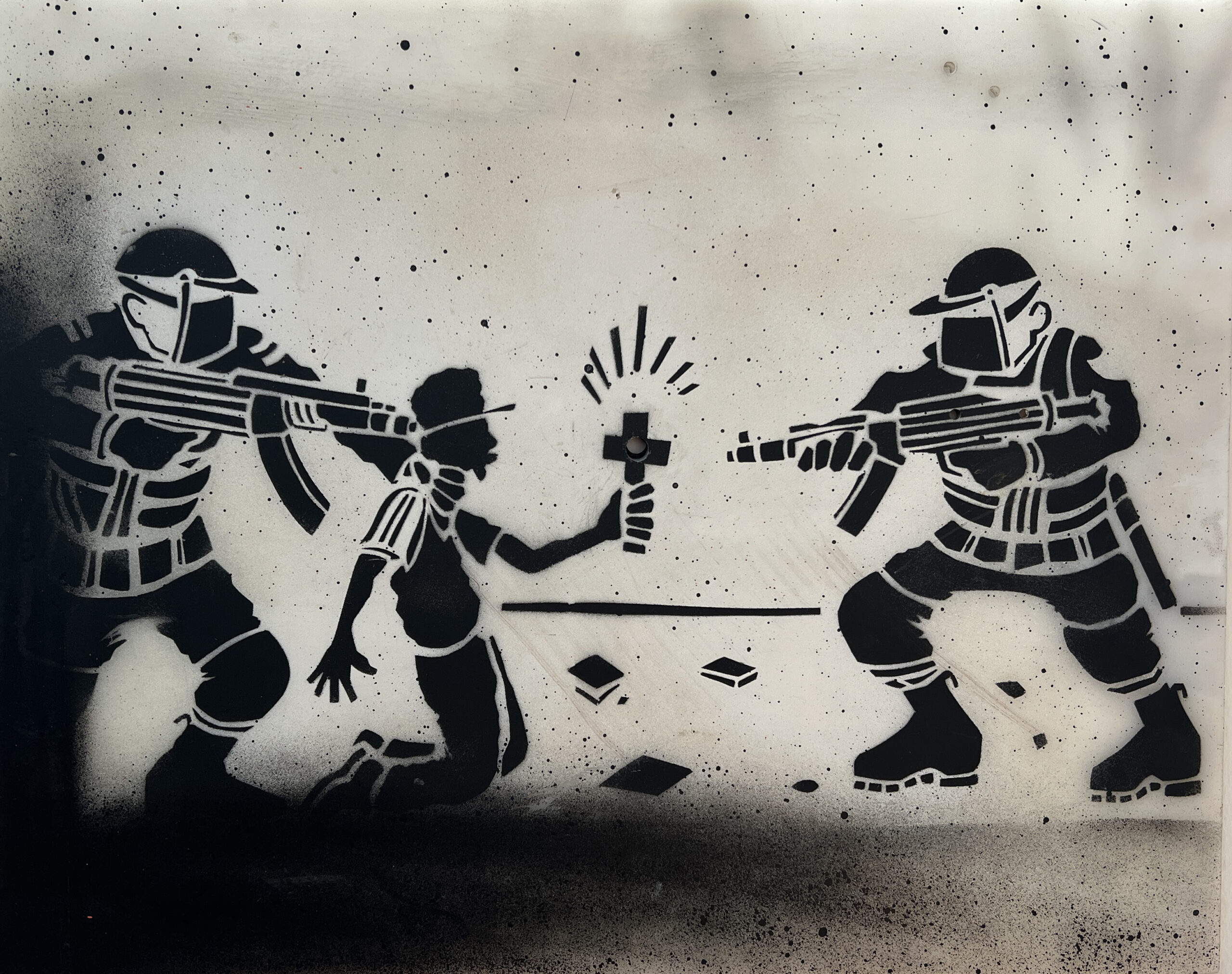Jerry Gant, Crossing Paths, Undated, Flat black aerosol stencil art on acrylic panel, H 17 ½” x W 22” D 1/4”, Courtesy of Linda Street and Pink Dragon Artist Syndicate LLC.
Curator
- Noelle Lorraine Williams
Artists
- Reginald Blanding
- Jerry Gant
- Dr. Marc Lorenc
- Stafford Woods
- Noelle Lorraine Williams
Opening Reception Thursday, September 19, 5pm – 7pm
The curator of this exhibition, Noelle Lorraine Williams, states, “The 17th and 18th century colonization and enslavement of Native American and Black nations by Europeans is the foundation of Newark’s history. Thankfully, Black revolutionary writers in Newark from the 1800s to today fought this attempt at the total control of Black lives. Colonialism works by forcing underground the histories that fight its legitimacy. In 2019 Rutgers-University excavated a one block site in downtown Newark that had for many years been paved over to provide parking for nearby shops. At this time thousands of objects and dozens of graves were found, residue of previous occupants of the site, including a church, cemetery, school and private residences. This exhibition shares some of those objects and asks them to speak. Can these violently disposed of objects tell the stories of other violently affected lives??”
Williams asks, “Can we use these found objects, art and other strategies to tell the stories of Newark’s first Black activist community that fought the removal and violence against Black communities in this country?”
This exhibition features work by Reginald Blanding, Jerry Gant, Dr. Marc Lorenc (Unstuck in Time Gaming), Stafford Woods and Noelle Lorraine Williams (Black Power! 19th Century).
This exhibition is the second in a series titled “Invisible Cities (Newark)”. This is a multi-year project focusing on collaborations with individuals to bring to light new knowledge about the city of Newark, to tell many stories about this place. This project is centered around 25,000 artifacts that were excavated from a city block in a historic part of Newark between Washington, Halsey, New, and Linden Streets). The title was inspired by Italian author Italo Calvino, and it suggests that we might consider the possibility of plural histories of a city, and that there are many histories of any city that have remained hidden from us.
The Paul Robeson Galleries’ are supported by the Chancellor’s Office, Robeson Campus Center, and the Cultural Programming Committee, Rutgers University-Newark. Additional in-kind support provided by Form Design Studio at Express Newark.
Please note—the work in this exhibition represents the views of the artists and curator.
